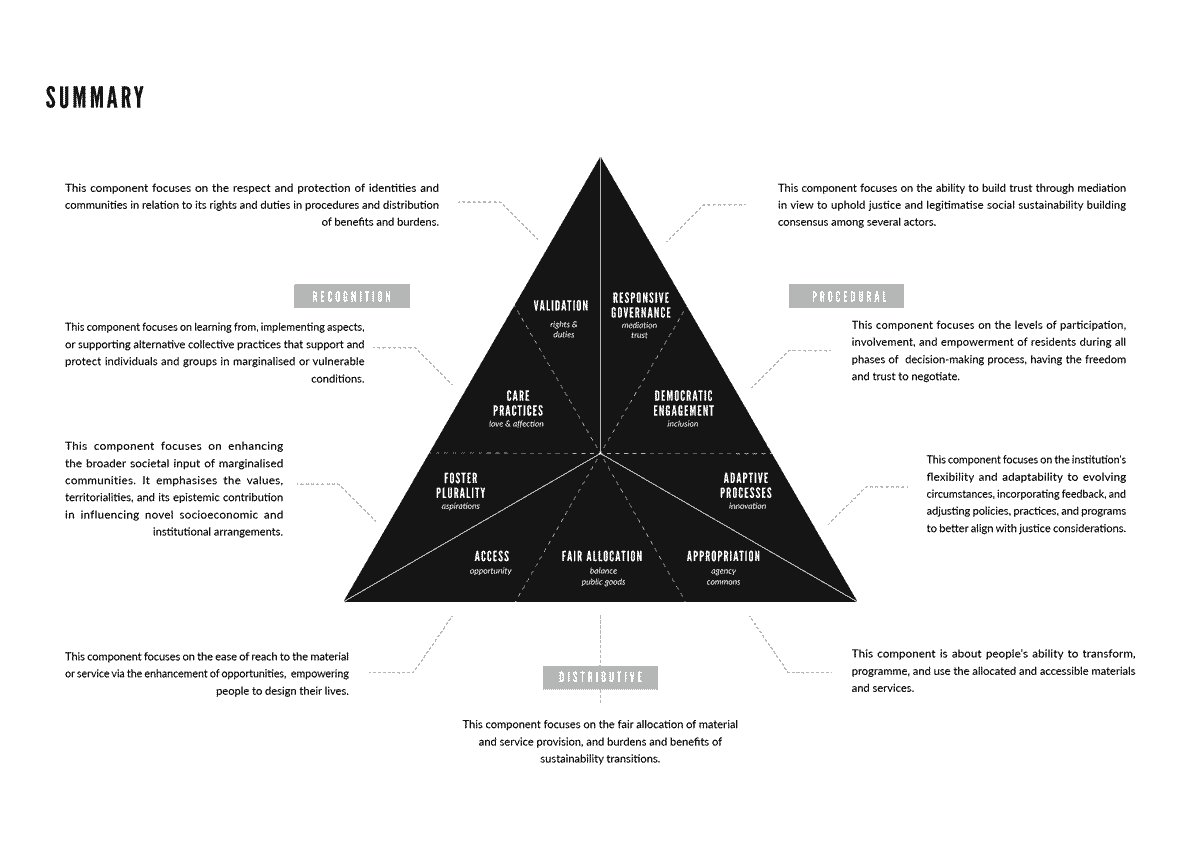
'Memories from worlds yet to be inhabited' collects the research from Hugo López Silva
This website is being designed to minimise the energy consumption and CO2 emissions that result from navigating the internet. Know more.
The Spatial Justice Benchmarking
A package of tools and approaches for the unpacking and implementation of the concept of Spatial Justice
Hugo López
July 2024
Context
The tools and approaches presented here are part of the work developed by the Centre for the Just City in the context of the Horizon Europe UP2030 project, which involves 10 European cities, one in South America, and more than 40 technical, knowledge, and city partners.
With Dr Prof Roberto Rocco, Dr Prof Juliana Gonçalves, and Dr Prof Marcin Dabrowski.
The Spatial Justice Package
TYPE
Spatial Justice
Matrix
Justice Readiness Level
VISUAL + TABLE + TEXT
TEXT
VISUAL
TOOL
TOOL
FORMAT
AUDIENCE
DESCRIPTION
IMAGE
EXCEL
DASHBOARD
ACADEMICS
PRACTITIONERS
ACADEMICS
PRACTITIONERS
PRACTITIONERS
ACADEMICS
PRACTITIONERS
PRACTITIONERS
UNPACK SPATIAL JUSTICE INTO MORE APPLICABLE COMPONENTS
SET OF CRITERIA, RECOMMENDATIONS, AND REFERENCES OF SPATIAL JUSTICE
COMMUNICATION VISUAL
EVALUATION TOOL FOR SPATIAL JUSTICE CONSIDERATIONS
DOCUMENT EVALUATION PROCESS TO SPATIAL JUSTICE CONSIDERATIONS
OUTPUT
STATUS
CONCEPTUAL MODEL
TABLE
TOOL
TOOL
PROCESS
V2
IN PROGRESS
IN PROGRESS
V1
V1
Spatial Justice Package:
Spatial Justice Conceptual Model

Image: Spatial Justice Conceptual Model (Lopez, Rocco, Gonçalves, & Dąbrowski, 2024)
The Spatial Justice Conceptual Model (SJCM) is based on an extensive literature review at the intersection of justice, spatial justice, and planning. The SJCM conceptualises Spatial Justice by defining applicable components and goals of for each justice dimension (Recognition, Procedural, and Distributive). When approached as an analytical framework, it allows for a structured and comprehensive way of assessing how aspects of spatial justice are considered in planning and design, while drawing attention to the underlying components that build each dimension.
